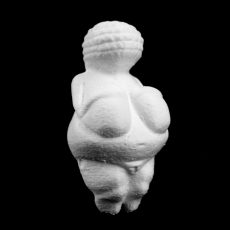Table of Contents:
The rovers (men?) are from Mars, and … the probes (women?) are from Venus. Engineer and principal investigator of NASA’s Innovative Advanced Concepts project Jonathan Sauder presents a vision for Venus exploration in a podcast for Robohub portal. Will it be a next step on exploring the Solar System?
After Mars, there will probably be the time for the hot neighbor on the other side. The goal of the project described today on the Botland blog, which was an open competition with a winner finally selected, is to create a rover to visit the surface of Venus. Jonathan Sauder explains why Venus exploration is important and why previous missions to the surface only lasted a few hours. Most importantly, however, he discusses an innovative robotic concept – a hybrid robot that would be mostly mechanical and powered by wind energy. So there are ideas of using well-known and not at all the newest technologies, and this is paradoxically new.
The original podcast can be found right here.
Venus roadside picnic… without the electronics

The Automaton Rover for Extreme Environments (AREE) project is funded through NASA’s Innovative Advanced Concepts program. AREE was first proposed by Jonathan Sauder in 2015. At the time, he was inspired by mechanical computers, which use levers and gears (general mechanical parts) rather than electronics to perform calculations. It seems downright improbable that a machine designed for such a complex task could be built without those components. After all, electronics is everywhere and even presents itself to you on the screen.
However, it turns out that such a rover may be able to better explore Venus and stay there for longer. Why? The planet’s hellish atmosphere is as dense as Monday morning – it’s more than 90 bars, or 90 times that of Earth’s atmosphere. The average temperature at its surface is 737K, which equals just over 463 degrees Celsius – enough to melt the lead. You could basically solder in your hands without the equipment. The landscape, however, is completely barren, with nothing around but dust-covered rocks. Concerning breathing, there’s CO2 – it makes up 96.5% of the atmosphere. Plain crazy.
To survive in dense Hell
Mars is not a place for spring break, too. Difficulties and hazards of the Red Planet include exposure to radiation both during the journey to Mars and on its surface, lack of microbes to support the vegetation in the soil, low gravity, lack of water except for ice and residual amounts in the atmosphere, cold temperatures, and finally a whole pack of psychological factors. We are talking about a visit of a human crew instead of a probe or rover, of course.
Venus, though increasingly being pointed among science fiction enthusiasts as the second candidate for colonization or terraforming efforts right after Mars, presents even more harsh conditions.

Venera, Soviet Union’s unmanned space probe flight program from 1961 to 1983 aiming for Venus, included a total of 24 missions. The first of these, the would-be sputnik probe, remained in orbit around the Earth. Venera 16, the last interplanetary probe launched from the Baikonur cosmodrome, took about 750 spectral images of the planet. By July 1984, it was able to transmit the terrain shapes of the polar regions on Venus. The previous lander, Wenera 13, transmitted the longest – 127 minutes, straight – and this can be considered quite a success.
There is no denying that so far, in terms of serious space plans, we have had Venus rather in the nose. The first choice is Mars, not to mention the exploration of the Mariana Trench – after all, the Earth has not yet revealed all its secrets. An interesting summary of philosophical musings and more on that can be found on the Planetary Society website.
What’s next for Clockwork Rover AREE
One of the design challenges for Clockwork to settle on the surface of Venus is mobility. There are still many unknowns about the surface of Venus. Sauder’s first idea resembled spiders with spindly legs that would be powered only by wind. Rocky terrain, however, means such a design would be unstable, and a fatally overturned rover could mean virtually the end of the mission. What came with help are the treads and tracks of old Earth tanks – after all, they were designed to roll over trenches and craters. So one might suspect that it would be a tracked vehicle.

Morse alphabet is considered for exploration of the solar system. We’re glad to see such an old idea here.
In terms of communication, when you dispense with electronics, there remains an idea from 1838 – the Morse alphabet. An orbiting vehicle could send signals to a rover using radar. Sauder described the idea as the opposite of stealth technology – cloaking military aircraft. Stealth aircraft have special shapes that scatter radar signals, while the team is exploring how to shape these targets to instead clearly reflect those signals. Adding a rotating aperture in front of the radar target would allow the rover to turn the bright reflected spot on and off – just like a sea lighthouse or navy communications lights.
In the next phase of project development the team hopes to prototype a rover that will eventually be able to explore the geology of Venus and drill some samples – like the NASA Perseverance working currently on Mars.
How useful was this post?
Click on a star to rate it!
Average rating 0 / 5. Vote count: 0
No votes so far! Be the first to rate this post.



















